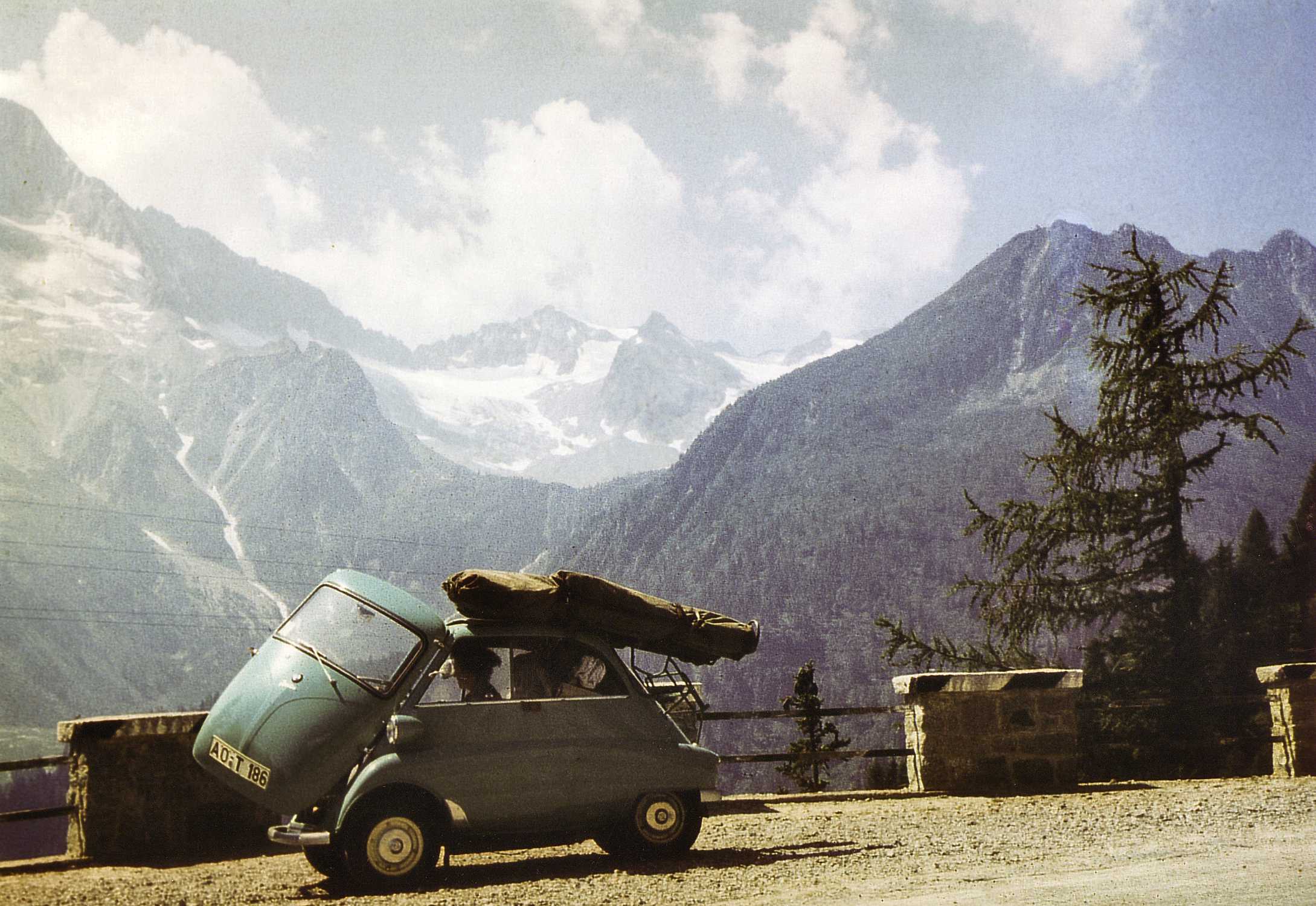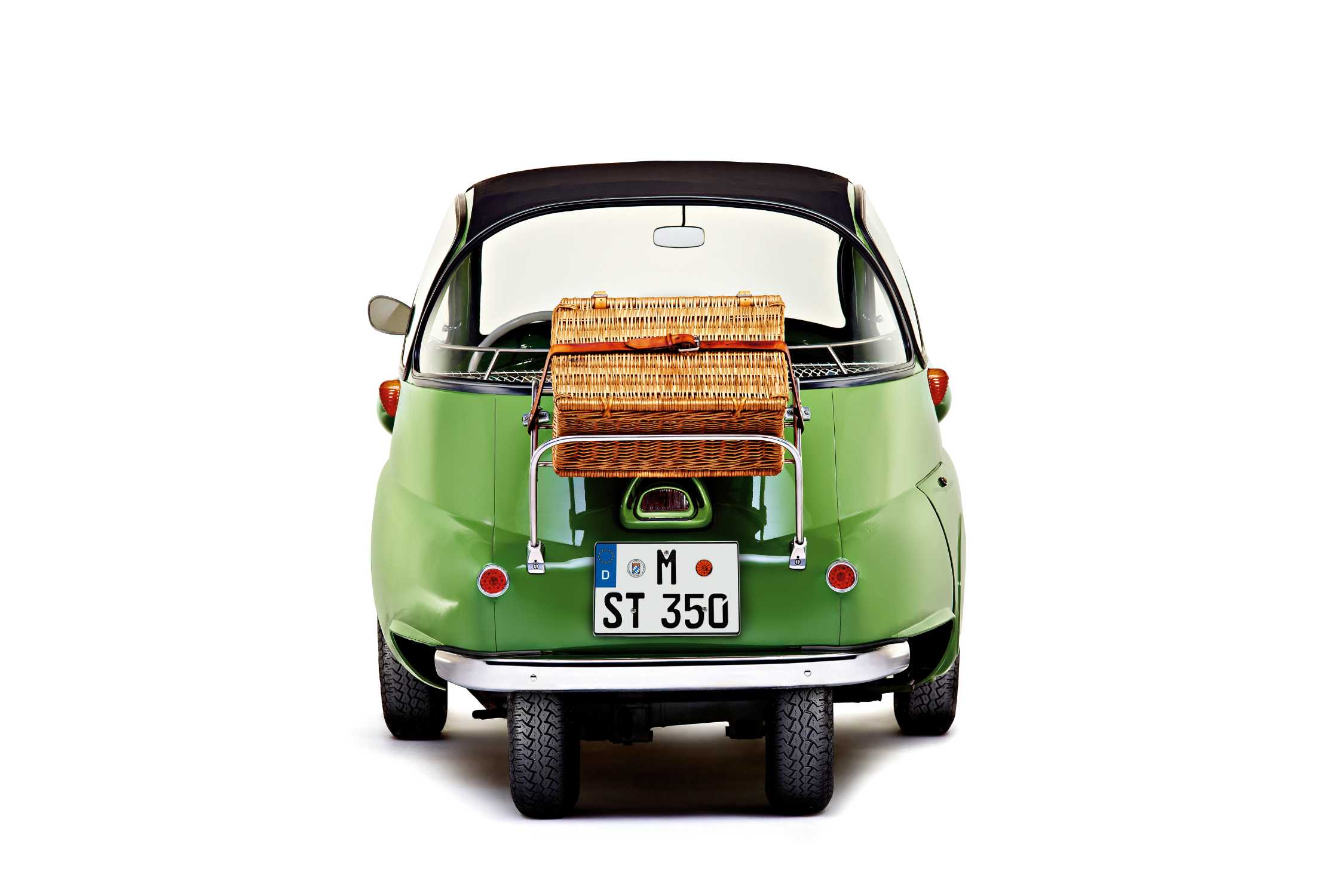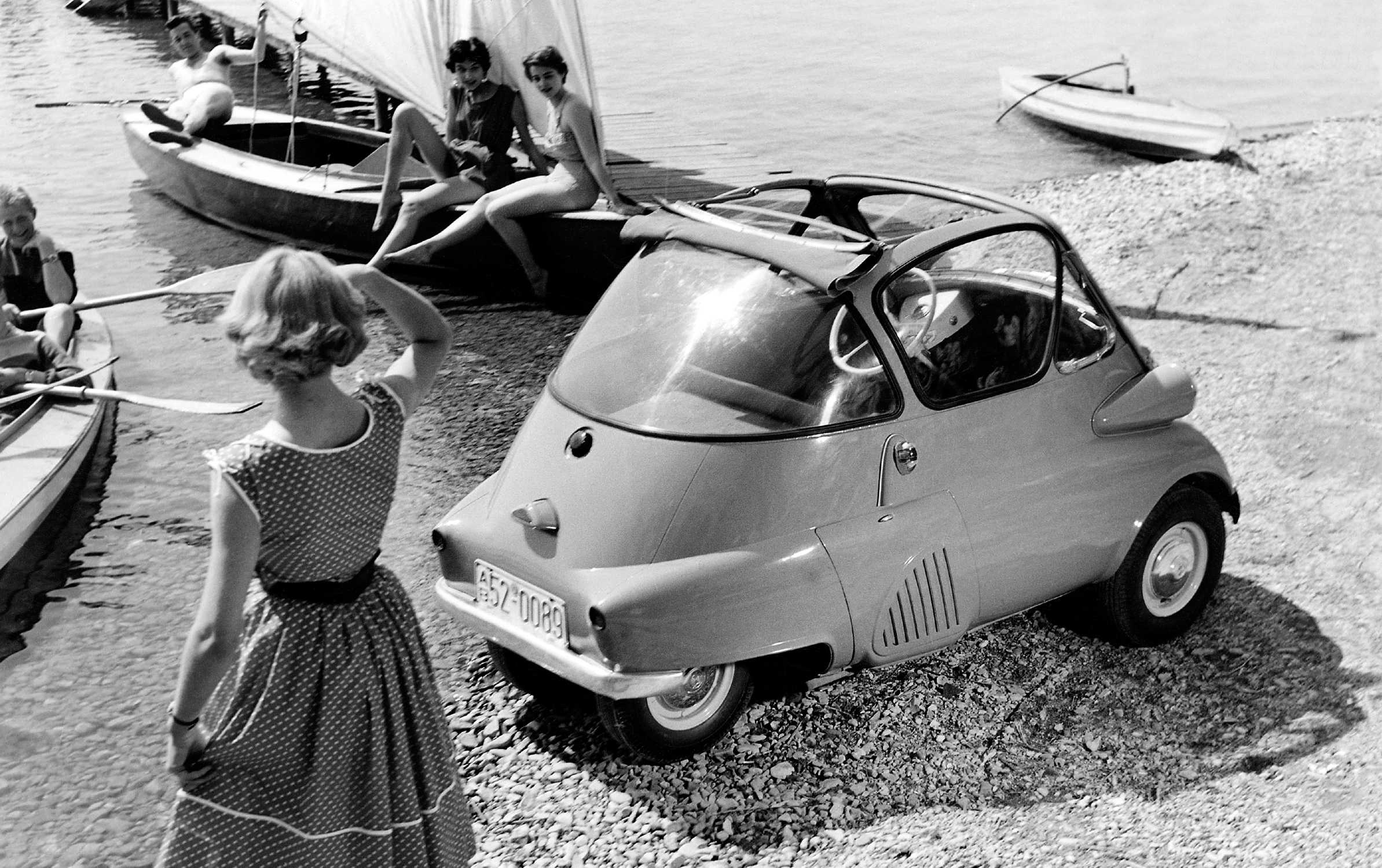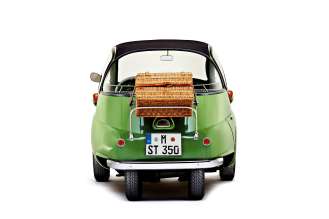“Let’s meet up for a cappuccino at Lake Garda!” is a popular refrain among Munich locals. With a fair wind and heavy right foot, those locals can roll up at said meeting point in three-and-a-half to four hours. In the 1950s, driving a microcar like the BMW Isetta or Messerschmitt Kabinenroller over the Brenner Pass was a serious undertaking. Back then, where you were going (or the coffee you would be drinking) was far less important than how you would make it there.
By the mid-50s, the time of hardship in post-war Germany had passed and the country’s “Wirtschaftswunder” (economic miracle) was gathering pace. First came the wave of food mania, as the shelves in Germany’s shops finally began to fill again. That was followed by a wave of travel mania, as Germans were able to holiday abroad again.
Germany’s 1954 World Cup win in Switzerland also provided a confidence boost for its people. In the mid-50s, three quarters of Germans – in contrast to their football team – had never left their home country. However, change was afoot. The first choice of travel destination was Austria, but the place West Germans really yearned to visit during the Wirtschaftswunder era was Italy. Rudi Schuricke’s song Capri-Fischer had the whole nation dreaming of a sunset by the sea.
Most people still travelled by train, but it was no surprise that those who already owned a car would choose to drive to their holiday destination. Having said that, for many drivers the Brenner Pass represented a barrier of epic proportions. Any trip along this formidable Alpine route was generally preceded by lively debate “down the pub” on how best to tame it. The effect of double-declutching to change gears, for example, would be deconstructed in minute detail.
The lady of the house, meanwhile, would set about preparing the luggage for the trip weeks in advance and regularly update the list of essential supplies. Nobody questioned the intrepid travellers’ intention to take all the food they needed for the trip with them in the car since most Germans viewed Italian cuisine with a large spoonful of suspicion. After all, word was that the Italians preferred pasta – and undercooked pasta at that – to potatoes.
The journey generally proceeded relatively smoothly as far as Innsbruck, with traffic levels still within limits in the mid-50s. However, things started to get trickier once the climb to the Brenner Pass began. The old road was narrow, had no paved hard shoulder and was in a poor state of repair as the ever-increasing numbers of trucks took their toll on the surface. Potholes multiplied, which wasn’t great news when you were clambering up the mountainside in an Isetta. It was only a matter of time before one of your four wheels would encounter a decaying piece of asphalt.
The army of trucks winding their way up the Brenner Pass at a snail’s pace meant the road was heaving with traffic pretty much around the clock. It was virtually impossible to overtake, you just had to battle your way in an endless convoy of vehicles up along this gateway to the south. Plenty of your fellow travellers would run out of steam, victims of boiled radiators or tortured souls, man and machine succumbing to unfamiliar stresses.
Many drivers took a break when they reached the summit of the pass, shortly before the Italian border, to allow their car and themselves a short breather. Small groups of drivers would soon form, their pride swollen after what they have achieved and their stories eager to be told. But reaching the top of the Brenner Pass was only part of the battle; the run down to the valley was no walk in the park either. The overloaded vehicles had still to be guided down the mountain with a watchful foot over the brakes. And, given the modest stopping power of the drum brakes of the time, that was an undertaking at least as daunting as the climb up the pass in the first place
The majority of holiday-makers also approached the border crossing with due respect. Wolfgang Schörnig was just five years old when he travelled here on his first trip with his family in 1955 and recorded his memories of the journey in his book Der Brenner ist nichts für heurige Hasen: “The Italians were a different proposition from their Austrian counterparts, with their high-cut boots, pantaloons and snappy uniforms,” he recalls. “Their eyes gazed sternly into the eagerly proffered passports and you just wanted to avoid doing something wrong – at all costs! Actually, it wasn’t a big thing, and a few moments later you were on your way again. But still, you were in another country with a different language, and that was something special back then.”
Still there was a way to go before you reached your destination. Whether you “only” had to drive to Lake Garda or were heading on to Jesolo or Rimini, you were likely to be on the road for a while yet.
By the mid-1950s the old Brennerstraße had become hopelessly overcrowded, so in 1960 work began on construction of the Brennerautobahn motorway. This is the road that today will take you from Munch to the lakeside promenade in Garda or Bardolino in just a few hours, leaving you plenty of time to reflect on one of the crowning achievements of modern automotive design – seats with lumbar support and a continuously adjustable air chamber system.
Let’s raise a double espresso to that!




